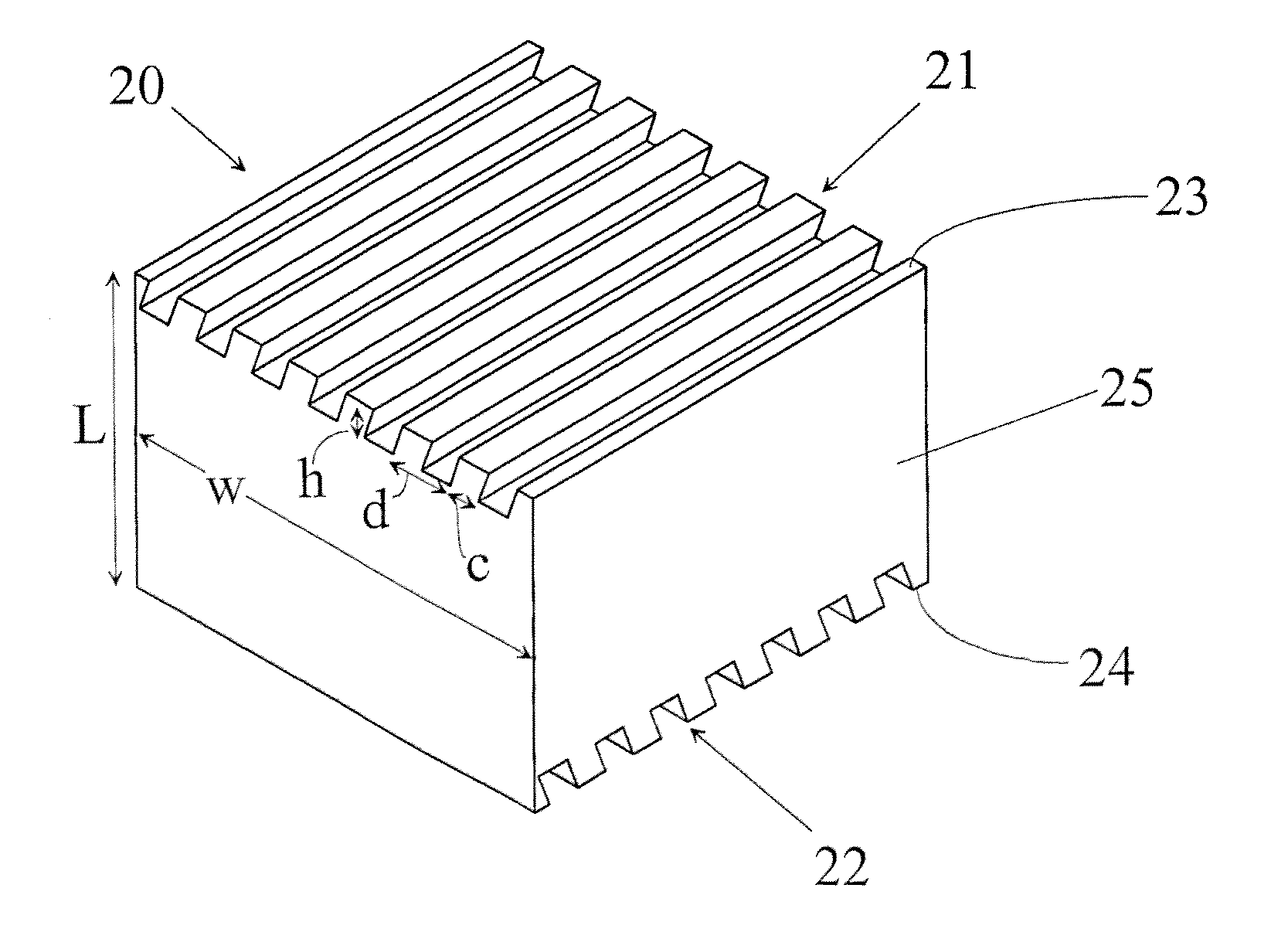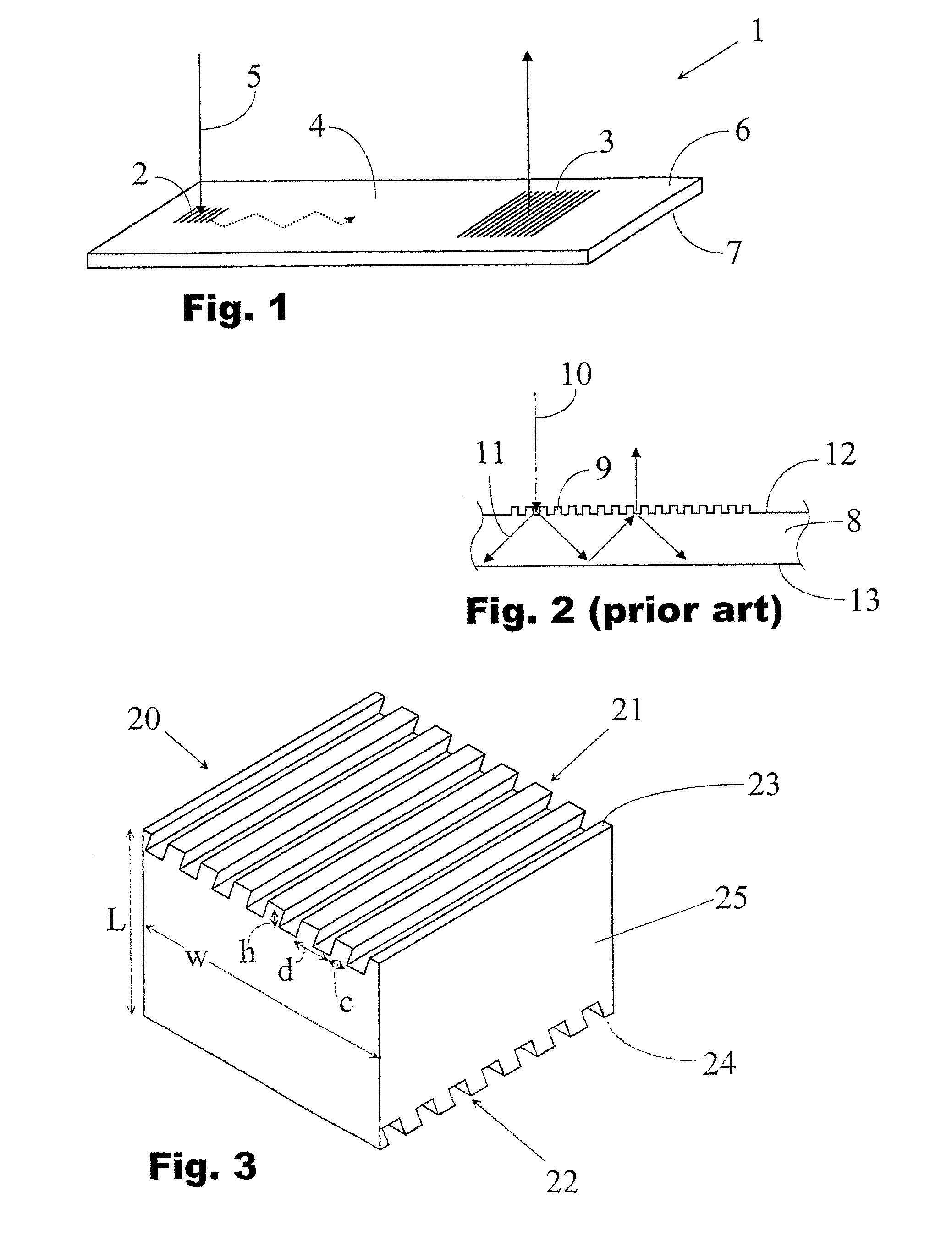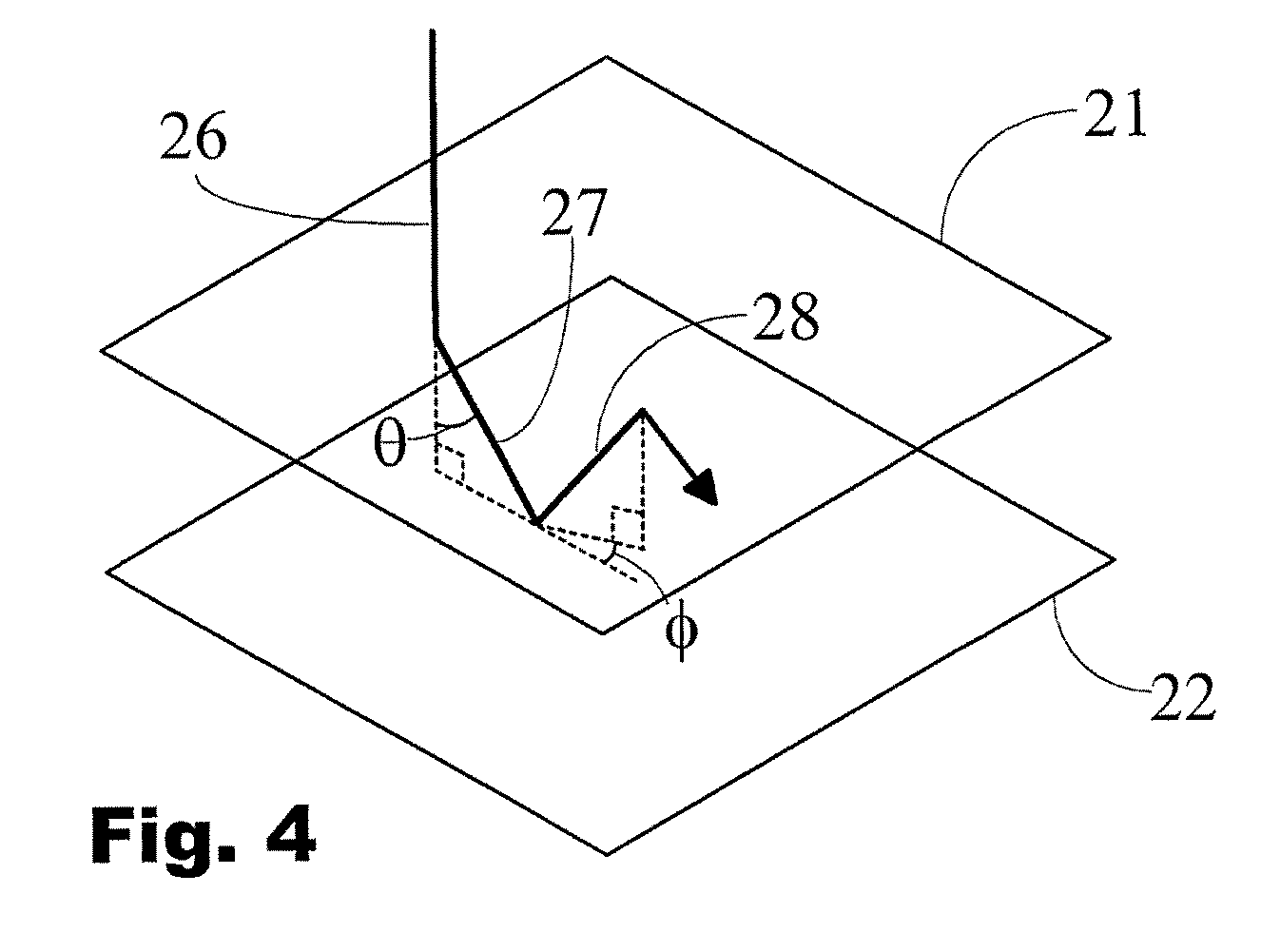Arrangement and a method for coupling light into a plate-like light guide
a technology of arrangement and light guide, which is applied in the direction of optical light guide, optics, instruments, etc., can solve the problems of poor total in-coupling efficiency, limitation of specific polarization states of light, and far from a generally applicable solution for coupling light into thin light guide, and achieve cost-effective effects
- Summary
- Abstract
- Description
- Claims
- Application Information
AI Technical Summary
Benefits of technology
Problems solved by technology
Method used
Image
Examples
Embodiment Construction
[0030]In FIG. 1, an optical device 1 having an in-coupling region 2 and an out-coupling region 3 arranged on a thin light guide 4 is shown. The purpose of the in-coupling region is to diffract light 5 incident on it into the light guide in a direction which allows the diffracted light to propagate within the light guide via total internal reflections at the surfaces 6, 7 of the light guide. Correspondingly, the intended function of the out-coupling region is to couple the light propagating within the light guide again out of it. This kind of arrangement can be used e.g. in virtual displays or different kinds of iliumi-applications. Besides the basic configuration of FIG. 1, in some applications there can be several cut-coupling regions around the in-coupling region.
[0031]The main problem related to arrangements shown in FIG. 1 is that there has not been available a solution for effective in-coupling in cases where the light guide thickness is substantially smaller than the desired w...
PUM
 Login to View More
Login to View More Abstract
Description
Claims
Application Information
 Login to View More
Login to View More - R&D
- Intellectual Property
- Life Sciences
- Materials
- Tech Scout
- Unparalleled Data Quality
- Higher Quality Content
- 60% Fewer Hallucinations
Browse by: Latest US Patents, China's latest patents, Technical Efficacy Thesaurus, Application Domain, Technology Topic, Popular Technical Reports.
© 2025 PatSnap. All rights reserved.Legal|Privacy policy|Modern Slavery Act Transparency Statement|Sitemap|About US| Contact US: help@patsnap.com



